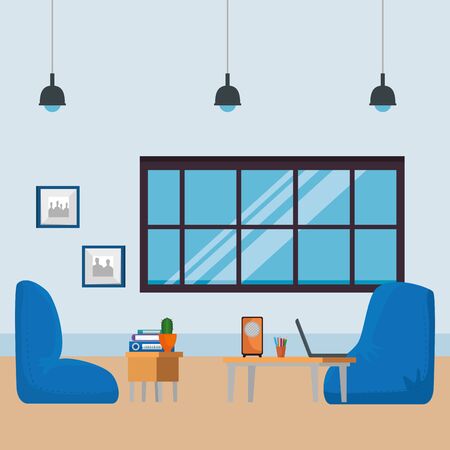Defining a Professional UK Interior Designer
When it comes to choosing someone to transform your living space, understanding what makes a professional UK interior designer is essential. In the UK, the title ‘interior designer’ isn’t legally protected, meaning anyone can technically use it. However, those who are truly qualified have followed recognised educational and professional pathways, adhering to high standards set by reputable bodies. A professional interior designer in the UK typically holds relevant academic credentials—such as a degree or diploma in interior design or a related field—and often belongs to respected organisations like the British Institute of Interior Design (BIID) or the Society of British and International Interior Design (SBID). These memberships signal that a designer not only meets certain criteria but is also committed to ongoing professional development and ethical practice. When searching for an interior designer, it’s important to look beyond impressive portfolios; ensure they demonstrate industry-recognised qualifications and affiliations that guarantee both skill and accountability. This foundational understanding will help you choose someone who brings both creativity and credibility into your home project.
Recognised Qualifications and Accreditations
When choosing a professional UK interior designer, it’s crucial to pay attention to their qualifications and official accreditations. These credentials are a sign of not just skill, but also commitment to industry standards and ongoing professional development. Here’s what to look for:
Key Credentials in the UK Interior Design Industry
| Credential | Description | Why It Matters |
|---|---|---|
| British Institute of Interior Design (BIID) Membership | The BIID is the leading professional organisation for interior designers in the UK. | Members must adhere to a strict code of conduct and demonstrate continuous professional development, ensuring high standards. |
| Relevant University Degrees | Bachelor’s or Master’s degrees in Interior Design or related fields from recognised UK universities. | A solid academic background provides theoretical knowledge and practical skills essential for sophisticated design work. |
| Accredited Courses & Diplomas | Courses approved by respected bodies such as the BIID or the Society of British and International Interior Design (SBID). | These ensure up-to-date industry training, modern design practices, and technical proficiency. |
Spotting Genuine Professionalism
Look out for post-nominal letters like BIID or SBID after a designer’s name. This not only reflects their membership but also signals that they are actively engaged with the latest trends and regulations within the UK interior design sector.
Your Assurance of Quality and Peace of Mind
Choosing a designer with these recognised qualifications doesn’t just mean you’re hiring someone with good taste – it means you’re working with a professional who understands safety standards, legal requirements, and ethical practices unique to the UK. This attention to detail ensures your home project is handled with expertise from start to finish.

3. Experience Matters: Portfolio and Past Projects
When selecting a professional interior designer in the UK, their qualifications extend far beyond certificates on paper. One of the most telling indicators of a designer’s capability is their portfolio—essentially a visual diary of their past projects. Reviewing a portfolio with a practical eye means looking for evidence of creativity, versatility, and problem-solving skills that align with your own needs. It’s not just about glossy photos; it’s about understanding how the designer adapts to different spaces and client requirements.
In the context of British homes and lifestyles, pay attention to local styles and period features in the portfolio. Whether you live in a Victorian terrace in London or a modern flat in Manchester, an experienced UK-based designer should demonstrate familiarity with these unique characteristics. Look for examples where they’ve enhanced original cornices, made clever use of narrow hallways, or balanced natural light in overcast climates—a true sign they understand what makes British interiors tick.
Don’t underestimate the value of client testimonials accompanying these projects. Authentic feedback from previous clients can offer insight into the designer’s reliability, communication style, and ability to deliver on time and within budget. In the UK, word-of-mouth carries particular weight, so glowing recommendations from satisfied homeowners or businesses can be a solid reassurance that you’re making a sound choice.
4. Understanding British Regulations and Standards
When selecting a professional UK interior designer, it’s not just about creativity or style—it’s also about their understanding of the essential regulations and standards that govern interior design projects across Britain. Knowledge of these rules is fundamental for ensuring your project runs smoothly, safely, and within the law.
Why Regulations Matter in Interior Design
In the UK, designers must consider a range of statutory requirements before starting any work. This isn’t just red tape—these rules are in place to protect you, your property, and anyone who enters your space. From gaining planning permission for structural changes to adhering to health and safety legislation, an experienced designer will know exactly how to navigate these complexities.
Key UK Regulations Every Designer Should Know
| Regulation/Standard | Description | Why It Matters |
|---|---|---|
| Planning Permission | Required for major alterations, extensions, or changes of use. | Avoids legal disputes; ensures compliance with local council guidelines. |
| Building Regulations | Standards for structural integrity, fire safety, accessibility, etc. | Keeps homes safe; necessary for insurance and resale value. |
| Health & Safety (CDM 2015) | Construction (Design & Management) Regulations 2015 apply to all building works. | Ensures safe working practices for everyone on site. |
| British Standards (BS) | Covers everything from electrical safety to furniture fire resistance. | Makes sure materials and installations meet national quality benchmarks. |
| Sustainability Guidelines | E.g., BREEAM or other eco-certifications. | Promotes environmentally responsible design choices. |
The Value of Regulatory Expertise in Everyday Life
A qualified interior designer will never overlook these standards. For example, they’ll ensure that open-plan layouts still meet fire escape regulations or that a listed building’s features are preserved according to heritage laws. Their expertise translates into peace of mind for you: fewer delays, no unexpected fines, and a home that feels as good as it looks—organised, compliant, and built to last.
5. Communication and Collaboration Skills
When choosing a professional UK interior designer, communication and collaboration skills are absolutely essential. Good design isn’t just about vision; it’s about being able to clearly share ideas, listen attentively, and ensure that everyone is on the same page from start to finish. In the UK, where projects often involve a host of local tradespeople and suppliers—think joiners from Yorkshire or fabric houses in London—a designer must be adept at liaising with all parties involved. Reliable communication helps avoid misunderstandings and costly delays, ensuring your project runs smoothly.
A skilled interior designer will not only relay your preferences to builders and craftsmen but also interpret technical jargon into plain English for you. They’ll schedule regular updates, answer questions promptly, and keep you informed every step of the way. It’s worth looking for a designer who values transparency and is happy to explain their processes in detail—this is especially important when working with British suppliers who may have their own ways of doing things or regional quirks.
Collaboration is equally important. A great UK interior designer should be comfortable building positive relationships with local tradespeople, understanding their schedules, and respecting their expertise. This fosters trust and can often mean better workmanship, timely delivery, and even preferential pricing. When reviewing potential designers, ask how they handle site meetings, how frequently they check in with contractors, and whether they have established contacts within the community.
Ultimately, a designer who communicates well and collaborates effectively will save you stress and help turn your vision into reality—whether you’re transforming a Victorian terrace in Manchester or a modern flat in Edinburgh.
6. Staying Updated: Commitment to Continued Professional Development
When choosing a professional interior designer in the UK, it’s wise to look for someone who truly values ongoing learning and development. The world of interior design is ever-changing, with new trends, materials, and sustainability practices emerging all the time. A great designer won’t just rest on their laurels after earning their qualifications—they’ll actively seek out fresh knowledge and creative inspiration.
In the UK, respected designers often join professional bodies such as the British Institute of Interior Design (BIID) or the Society of British and International Interior Design (SBID), which both encourage members to engage in regular training and workshops. This commitment helps designers stay ahead of changes in building regulations, eco-friendly solutions, and best practices that are unique to British homes and lifestyles.
Furthermore, designers who invest in continued professional development tend to have a deeper understanding of local trends—think clever storage solutions for smaller London flats or ways to incorporate British heritage details into modern spaces. They’re also better equipped to advise on responsible sourcing and environmentally friendly materials, aligning with the UK’s growing focus on sustainability.
When you meet with a potential designer, don’t be shy about asking how they keep their skills sharp. Do they attend industry events like Decorex or 100% Design? Are they up-to-date with new technologies or sustainable product lines? Their answers will give you confidence that your project will benefit from the latest expertise—and a forward-thinking approach tailored to life in Britain.


